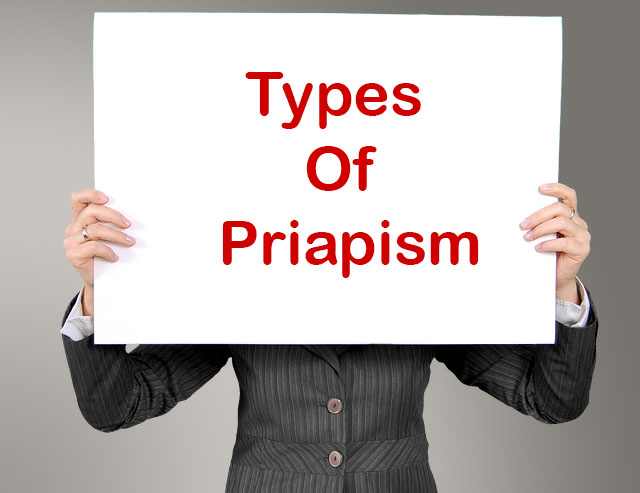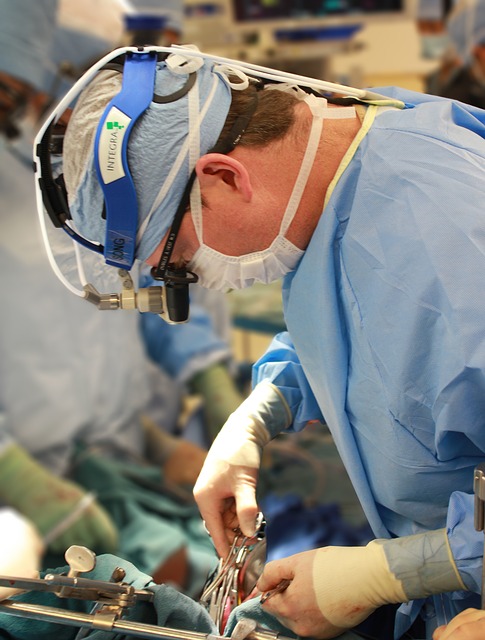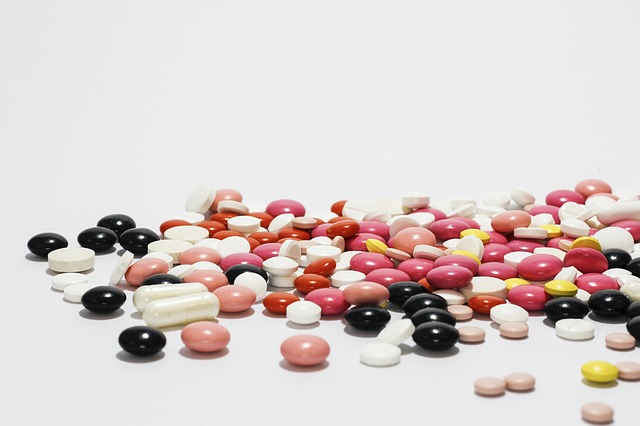Nothing to Laugh About: 5 Pointers for Handling the Pain of Priapism

When you were younger, you probably refered to a penis as either big or small, or hard or flaccid – and nothing else. Now that you are older and much wiser, you most likely have realizedthere are various conditions that affect a man’s wiener down there. You learned about erectile dysfunction, the inability to father a child, a condition called micropenis, and so much more. Unfortunately, these conditions are no laughing matter.
Aside from this, there is also one condition that affects men these days – priapism.
 To give you an idea what priapism is all about, think about the scene in Love and Other Drugs where Jake Gyllenhaal had to bring himself in the emergency room because of prolonged erection.
To give you an idea what priapism is all about, think about the scene in Love and Other Drugs where Jake Gyllenhaal had to bring himself in the emergency room because of prolonged erection.
Unfortunately, he had either too much Viagra or his body didn’t react well with the drugs, hence the boner.
The concept is same with priapism, but 10 times more pain. To help you understand the concept better, here are pointers you should know about priapism, and tips on how to handle the pain.
1. Understanding The Concept Of Priapism
In simple terms, priapism is a prolonged erection of the penis. It is a persistent and painful erection, which lasts for more than four hours.Worse, this erection is not caused by arousal or any form of sexual stimulation. This happens when there is too much blood trapped in your penis area and it is unable to escape.
 In case you notice that your penis doesn’t die down after humping and it is in erect state for four hours, you should bring yourself to the nearest hospital. Priapism is not common and requires immediate medical attention to prevent further damage in the penile tissues.
In case you notice that your penis doesn’t die down after humping and it is in erect state for four hours, you should bring yourself to the nearest hospital. Priapism is not common and requires immediate medical attention to prevent further damage in the penile tissues.
If you think that only adult men experience priapism, then you are wrong. Even boys aged five to 10 could experience a prolonged erection of penis.
Symptoms of priapism include:
- An unwanted erection that lasts longer than four hours.
- An erection that is on and off for many hours, referred to as stuttering priapism.
- A rigid penile shaft, but the glans is soft.
- A painful or tender penis.
If you experienced any of these symptoms, you need to go to the emergency room immediately. However, if the painful erection resolves on its own, still, don’t hesitate to see a doctor. He may prescribe medications or treatments to prevent any priapism attacks in the future.
2. Types Of Priapism
The two types of priapism are as follows:
- Low Flow Or Ischemic – This type of priapism happens when the blood becomes trapped in the erection chambers and unable to leave the penis. This is common not just in men with serious medical conditions, but also in healthy men.
- High Flow Or Nonischemic– This is a rare type of priapism that is less painful. High flow or ischemic priapism happens when there is a ruptured artery caused by an injury to the penis or perineum area. In other words, there is too much blood flow in the area and prevents the blood in your penis from circulating normally, hence the erection. It may be painless, but erections still last for at least four hours and the penile shaft is erect, but not rigid.
3. Common Causes Of Priapism
An erection is a response to physical or psychological stimulation. Once you are stimulated, certain blood vessels relax and expand, thereby increasing blood flow to your penile tissues.
 When the tissues are filled with enough blood supply, it becomes erect for as long as you are stimulated. As soon as the stimulation ends, the blood from the penis flows out and returns your member in its flaccid state.
When the tissues are filled with enough blood supply, it becomes erect for as long as you are stimulated. As soon as the stimulation ends, the blood from the penis flows out and returns your member in its flaccid state.
The next question is, what causes prolonged and painful erections? The answer is a lot. There is no exact formula that could lead to priapism. However, one thing is for sure, any changes in the blood flow could lead to persistent erection even if you are no longer stimulated.
Here are some of the most common factors that could contribute to priapism:
- Blood Disorders –Since priapism is blood-related, it follows that any existing blood disorders in your system could lead to prolonged erections, particularly ischemic priapism. An example of this is sickle cell anemia. It is an inherited disorder characterized by abnormal shaping of red blood cells, which is also a common cause of priapism among boys. If you have leukemia, you will more likely experience priapism, as well.
 Alcohol And Drug Use –Too much alcohol, the recreational use of ED drugs and the use of illegal drugs, like cocaine and marijuana could lead to prolonged and painful erections.
Alcohol And Drug Use –Too much alcohol, the recreational use of ED drugs and the use of illegal drugs, like cocaine and marijuana could lead to prolonged and painful erections.- Prescription Medications –Did you know that ischemic priapism could be a side effect of certain drugs, especially when not used properly?
Antidepressants such as Prozac, ED drugs like Viagra and Cialis and blood thinner drugs like warfarin are notorious when it comes to priapism. Drugs injected directly to the penis and medications for psychotic disorders can lead to prolonged erections. - Genital, Pelvic Or Perineum Injury – any injury or severe trauma you experienced down there could also be the reason why your man keeps on standing up.
- Other Injury – Aside from genital injuries, if you had a spinal cord injury in the past, this could lead to priapism in the future.
4. Tips On Handling Priapism
Given this information, the next question going through your mind right now is whether there are treatments available for priapism. The answer is yes. At the end of the day, the goal is to make the erection go away and prevent any erectile issues in the future.
The following treatments are available and can help:
 Ice Packs–This methodis the easiest, cheapest and most convenient way to treat priapism.
Ice Packs–This methodis the easiest, cheapest and most convenient way to treat priapism.
Although not 100 percent effective, applying ice packs in the area could help reduce the persistent swelling down there. However, this is more applicable on nonischemic priapism.- Aspiration –This treatment is essential in treating prolonged erection. During this stage and after the penis is numbed with local anesthesia, the doctor will use a small needle and syringe to drain excess blood in the penis.
This helps relieve pain, remove any blood with poor oxygen and eventually stop the erection. The doctor will repeat this procedureuntil the erection dies down. - Intracavernous Injection –This treatment is applicable on low-flow priapism. In this treatment, alpha-agonist treatment drugs are injected to reduce blood flow in the penis. This could help relieve pain by narrowing the veins become and reducing the swelling in the genital area.
- Medications–Aside from the intracavernous injection, medications known asalpha-adrenergic sympathomimetic can be injected in the spongy tissue of the penis. This will help constrict the blood vessels that carry the blood down there.
As a result, the blood vessels open up and allow the blood to flow out from the penis area. This is effective. However, be prepared to experience side effects such as dizziness, headaches and high blood pressure.  Surgical Ligation –When all else fails, surgical procedures could be your last resort. An example of this is surgical ligation. This procedure is applicable on ruptured arteries.
Surgical Ligation –When all else fails, surgical procedures could be your last resort. An example of this is surgical ligation. This procedure is applicable on ruptured arteries.
The doctor will ligate or tie off the artery that causes priapism. Eventually, this will help restore normal blood flow in the area and prevent any prolonged erections.- Surgical Shunts–This is another surgical procedure you can avail to address issues of priapism. Also used for low flow priapism, surgical shunt involves surgically inserting a passageway known as shunt into the penis.
The shunt becomes an alternative passageway to help divert and restore the blood circular in the right areas circulation and bring it back to normal. This could prevent future problems in the area down there.
5. Preventing Priapism
Here is the biggest question: Can you prevent priapism? Depending on the cause of priapism, you could still prevent it. Here are some of the things you need to do to prevent recurrent priapism:
- Treat Any Disease Or Illness That Caused The Priapism. Priapism will continuously haunt you, unless you address any existing issues.
- Look For Alternative Medicine.
 In case your current prescription medication is causing the prolonged erections, talk to your doctor and discuss the possibility of changing medications to avoid any issues in the future.
In case your current prescription medication is causing the prolonged erections, talk to your doctor and discuss the possibility of changing medications to avoid any issues in the future. - Live A Healthy Lifestyle. There is no guarantee that you are exempted from this condition as long as you eat healthy and exercise regularly; however, staying away from priapism triggers, such as alcohol and drugs, could help you a lot.
Despite the preventive measures and available treatments, it is recommended that you treat priapism at the onset. Don’t wait any longer by delaying or refusing to seek medical attention. If you neglect to bring yourself to the doctor and choose to go through that pain for as long as you can, then you are more at risk of permanent erectile dysfunction.
Don’t live your life in regret and pain. Seek help as early as possible. Sex is supposed to be afun and a pleasurable experience.


 Alcohol And Drug Use –Too much alcohol, the recreational use of ED drugs and the use of illegal drugs, like cocaine and marijuana could lead to prolonged and painful erections.
Alcohol And Drug Use –Too much alcohol, the recreational use of ED drugs and the use of illegal drugs, like cocaine and marijuana could lead to prolonged and painful erections. Ice Packs–This methodis the easiest, cheapest and most convenient way to treat priapism.
Ice Packs–This methodis the easiest, cheapest and most convenient way to treat priapism. Surgical Ligation –When all else fails, surgical procedures could be your last resort. An example of this is surgical ligation. This procedure is applicable on ruptured arteries.
Surgical Ligation –When all else fails, surgical procedures could be your last resort. An example of this is surgical ligation. This procedure is applicable on ruptured arteries. In case your current prescription medication is causing the prolonged erections, talk to your doctor and discuss the possibility of changing medications to avoid any issues in the future.
In case your current prescription medication is causing the prolonged erections, talk to your doctor and discuss the possibility of changing medications to avoid any issues in the future.